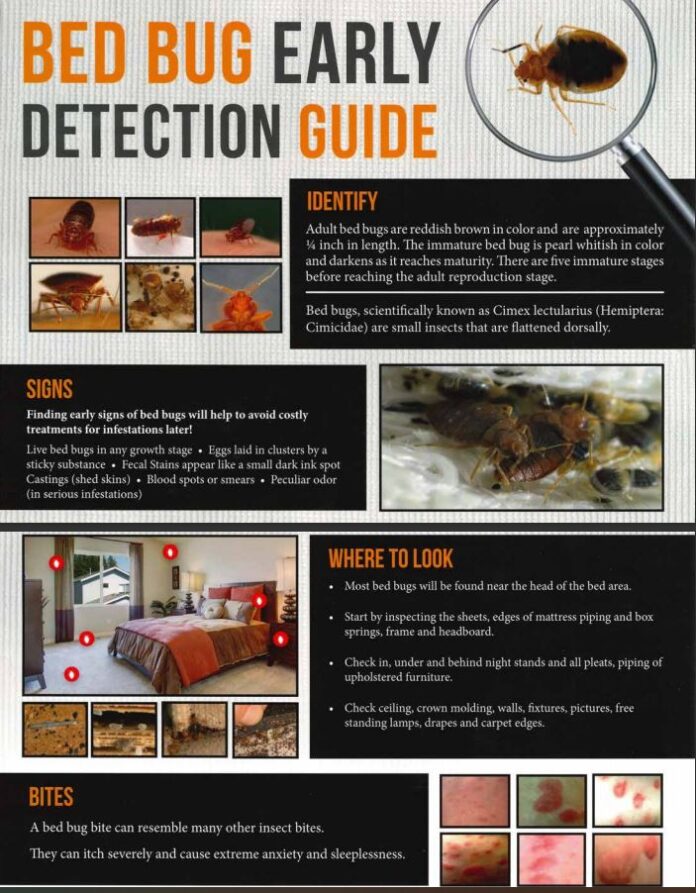
A Guide to Identifying Bed Bugs: Recognizing the Signs of an Infestation
Bed bugs have long been a nuisance for homeowners and travelers alike. These tiny insects are experts at hiding, and their bites can cause itchiness and discomfort. Recognizing the signs of a bed bug infestation is crucial for taking swift action to eliminate the problem. In this guide, we will discuss the key signs of a bed bug infestation and offer some tips on how to handle it effectively.
One of the most common signs of a bed bug infestation is waking up with small, itchy red welts on your body. Bed bugs are nocturnal creatures that feed on human blood while we sleep. They inject an anticoagulant to prevent our blood from clotting and then feed for about five minutes before retreating back into their hiding spots. These bites are often arranged in a linear or clustered pattern, commonly found on exposed areas of skin such as the arms, legs, neck, and face.
Another sign of a bed bug infestation is the presence of rusty or reddish stains on your bedding or mattress. After feeding, bed bugs may leave behind droplets or smears of blood. These stains can be found on the sheets, pillowcases, or even on the walls and furniture near the bed. Additionally, you may also notice dark spots on your bedding, which are bed bug excrement.
Bed bugs are excellent hide-and-seek players, and they tend to congregate in tight, dark spaces close to their food source. Look for signs of their presence in mattress seams, crevices, and even behind headboards. These insects are small, about the size of an apple seed, and have a flat oval-shaped body. Adult bed bugs are usually brown, but they can become reddish after feeding. The nymphs, or baby bed bugs, are smaller and lighter in color.
Bed bugs also emit a distinct, musty odor that can be quite pungent. This odor is a result of the pheromones released by the bugs. If you notice an unusual smell in your bedroom, especially near the bed or furniture, it could be a sign of a bed bug infestation.
Traveling or staying in hotels increases the risk of encountering bed bugs. These insects can hitch a ride on luggage, clothing, or even personal belongings. Therefore, when you return from a trip, be sure to inspect your luggage thoroughly, paying close attention to seams and pockets. Wash your clothes in hot water and dry them on high heat for at least 30 minutes to kill any potential bed bugs.
If you suspect a bed bug infestation in your home, it’s essential to take immediate action. Contact a professional pest control company experienced in bed bug extermination. They have the expertise and tools to identify and eradicate the infestation effectively. While there are DIY methods available, professional treatment ensures the complete elimination of bed bugs, including their eggs, which are challenging to detect and destroy.
Preventing bed bug infestations requires some precautions. When staying in a hotel, thoroughly inspect the mattress, headboard, and furniture before unpacking. Keep your luggage elevated on a luggage rack or in the bathroom instead of placing it on the floor or bed. After returning home, unpack your luggage outside and immediately wash your clothes. Vacuum your suitcase and consider using a protective bed bug cover for your mattress and box spring.
In conclusion, identifying the signs of a bed bug infestation is crucial for prompt and effective action. Keep an eye out for red, itchy bites, rusty stains, dark spots, and a musty odor. Inspect your bedding, furniture, and other hiding spots regularly, particularly after traveling. Take immediate action to treat the problem by contacting a professional pest control company. By being aware of these signs and implementing preventative measures, you can protect your home from the unwelcome presence of bed bugs.


















